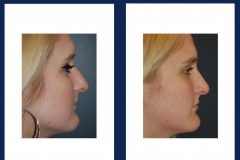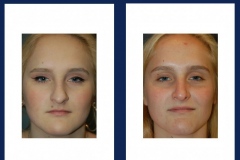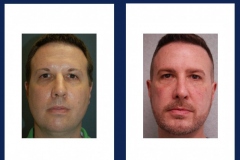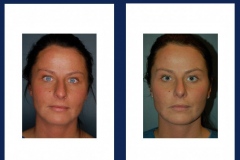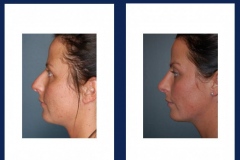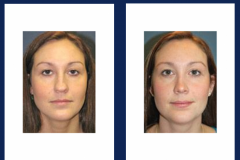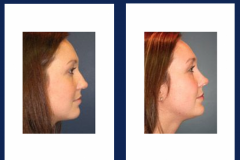NOSE (RHINOPLASTY)
About the Procedure
Rhinoplasty requires exceptional skill on the part of the surgeon because it is the most challenging of all facial plastic surgery procedures. Extensive experience in rhinoplasty surgery is essential for the surgeon to produce good results. During the consultation, a thorough analysis of the nose and face is conducted. In our practice, this is almost always accomplished with the help of video imaging, which gives the patient a very good idea of what the nose will look like after surgery.
Some nasal operations are performed through incisions made inside the nose. Sometimes the external approach is utilized. An incision is made between the nostrils, providing the surgeon excellent exposure inside of the nose. Bone and cartilage are removed, added to, or rearranged. Bumps in the nose can be reduced or completely eliminated. The nose can be made narrower by bringing the sides of the nose closer together. The tip of the nose can be made smaller or lifted to enhance the angle between the nose and the upper lip. When a nose is made smaller, the nostrils may also need to be reduced in size.
The tissues are then redraped over the new framework and the incisions closed. Tape and a splint are placed on the nose to help maintain the new shape and protect it. Gone are the days of packing the nose with gauze. Applying cold compresses to the area and keeping the head elevated help to reduce swelling and bruising. These symptoms will begin to fade in a day or two. There will be some subtle swelling for several months after nasal surgery.
A purely cosmetic rhinoplasty is not covered by insurance; however, the reconstruction portion (setoplasty) may be a covered benefit with some insurance policies. Like most cosmetic procedures, nasal surgery is done under "twilight anesthesia” (a local anesthesia with an intravenous sedative.)
The splint and sutures are removed at one week when most people feel very comfortable returning to social activities. Strenuous exercised is discouraged for two weeks after the procedure.

